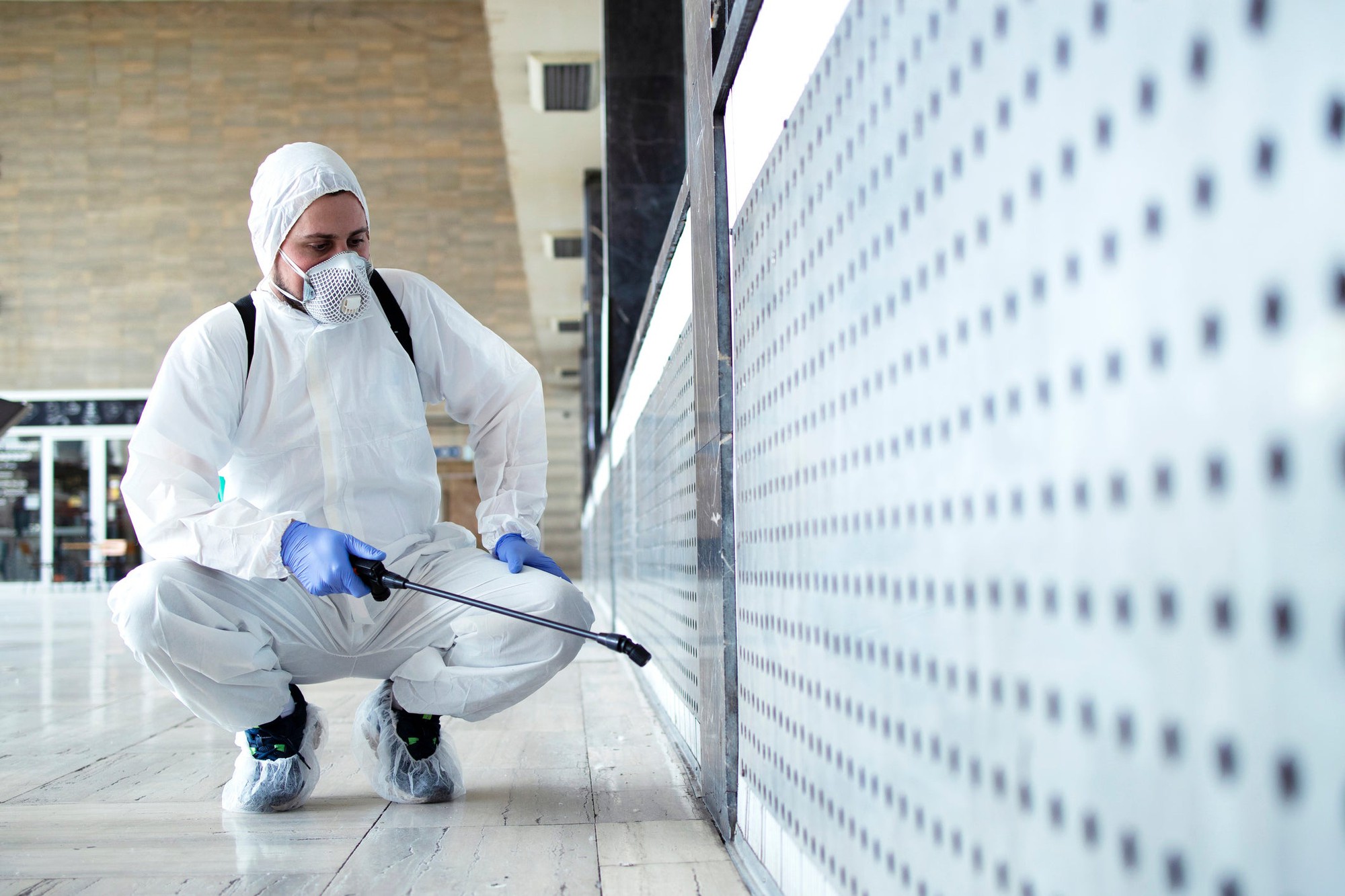
What Are Sanitization Services? A Comprehensive Guide
In today’s world, the importance of sanitization services has taken center stage due to heightened health concerns. These services play a vital role in protecting public health by reducing the spread of germs, bacteria, and viruses. From workplaces and schools to homes and healthcare facilities, sanitization services ensure that environments remain clean, safe, and conducive to good health.
In this comprehensive guide, we’ll delve deep into what sanitization services entail, why they are essential, and how they differ from regular cleaning. Additionally, we’ll explore key industries that benefit from these services and discuss best practices to ensure optimal results.
What Are Sanitization Services?
Sanitization services involve the systematic reduction of harmful microorganisms to a safe level, as determined by public health standards. These services are designed to eliminate or drastically reduce bacteria, viruses, fungi, and other pathogens that can pose risks to human health. Unlike basic cleaning, which focuses on removing visible dirt and debris, sanitization is more focused on decontaminating surfaces to minimize the risk of infection or disease transmission.
Sanitization services can range from simple disinfecting wipes to more complex processes like fogging or deep cleaning with specialized equipment. The goal is to create a cleaner, safer environment where the risk of contamination is significantly lowered.
The Importance of Sanitization Services
The need for proper sanitization has grown exponentially with the rise of highly infectious diseases, such as COVID-19, as well as other seasonal illnesses like influenza. Sanitization services have become an essential part of public health measures to reduce the spread of these diseases, especially in high-traffic or sensitive areas like hospitals, schools, and commercial spaces.
Key benefits of sanitization services include:
- Reduced Spread of Infections: Proper sanitization significantly lowers the risk of disease transmission, particularly in communal areas. High-touch surfaces like doorknobs, desks, and counters are major sources of germs and bacteria. Regular sanitization ensures that these surfaces remain pathogen-free.
- Improved Health and Safety: Sanitization services contribute to a healthier environment by ensuring that harmful microorganisms are eliminated. This is particularly important in settings where vulnerable populations, such as children or the elderly, are present.
- Compliance with Health Regulations: Many industries, especially those involved in food service, healthcare, and hospitality, are required by law to meet specific hygiene standards. Sanitization services help businesses comply with these regulations, avoiding penalties or legal issues.
- Enhanced Reputation: For businesses, maintaining a sanitized environment is crucial for customer trust. Whether you’re running a restaurant, a daycare, or a gym, clients expect a clean, safe space. Regular sanitization helps improve customer confidence and contributes to a positive reputation.
Sanitization vs. Cleaning: What’s the Difference?
While cleaning and sanitizing are often used interchangeably, they are two distinct processes with different objectives.
- Cleaning refers to the physical removal of dirt, grime, and debris from surfaces. This can involve sweeping, vacuuming, mopping, or wiping with soap and water. Cleaning helps to reduce visible contaminants but doesn’t necessarily kill germs or bacteria.
- Sanitization focuses on killing or reducing the number of germs and pathogens on surfaces to a safe level, as defined by public health standards. It goes beyond basic cleaning by using disinfectants and specialized chemicals designed to destroy harmful microorganisms.
Key Industries That Rely on Sanitization Services
Sanitization services are crucial across multiple industries, particularly those where hygiene is a priority. Some of the key industries include:
1. Healthcare
Hospitals, clinics, and other healthcare facilities must adhere to strict sanitation protocols to protect both patients and healthcare workers from infections. Sanitization services in healthcare settings involve the use of high-grade disinfectants and sterilization techniques to eliminate germs from patient rooms, surgical areas, medical equipment, and common spaces.
2. Food Service and Hospitality
Restaurants, hotels, and food production facilities must maintain high levels of cleanliness to prevent foodborne illnesses. Regular sanitization of food prep areas, kitchen utensils, and dining areas is crucial for maintaining public health and complying with food safety regulations.
3. Schools and Daycare Centers
Children are often more susceptible to infections due to their developing immune systems. Sanitization services in schools and daycare centers help minimize the spread of germs in classrooms, playgrounds, and common areas, ensuring a safer environment for students and staff.
4. Gyms and Fitness Centers
Gyms and fitness centers see high traffic and the frequent use of shared equipment, making them hotspots for germs and bacteria. Proper sanitization of workout equipment, locker rooms, and high-touch areas is essential to keep members safe and reduce the risk of infections.
5. Commercial Office Spaces
In office environments, shared spaces like conference rooms, break rooms, and restrooms are prone to contamination. Sanitization services help ensure that these high-traffic areas remain germ-free, promoting the health of employees and reducing the likelihood of workplace illnesses.
6. Public Transportation
Buses, trains, and other forms of public transportation are used by thousands of people daily, making them potential breeding grounds for germs. Sanitization services in public transportation help disinfect seats, handrails, and other surfaces to protect passengers and staff.
How Sanitization Services Are Performed
The process of sanitizing a space can vary depending on the type of environment, the level of contamination, and the specific needs of the client. However, there are general steps that most sanitization services follow:
- Assessment of the Area: A thorough inspection of the area is conducted to identify high-risk surfaces and determine the level of contamination.
- Selection of Disinfectants: Depending on the type of microorganisms present, sanitization experts will choose appropriate disinfectants and cleaning agents. This might include EPA-approved disinfectants, UV light systems, or chemical fogging solutions.
- Surface Cleaning: Before disinfecting, surfaces are cleaned to remove visible dirt and debris. This step is essential because disinfectants work more effectively on clean surfaces.
- Application of Disinfectants: The chosen disinfectants are applied to surfaces using a variety of methods, such as spraying, wiping, or fogging. High-touch areas like doorknobs, light switches, and countertops receive special attention.
- Final Inspection and Verification: After the disinfectant has been applied, the area is inspected to ensure thorough coverage. In some cases, testing tools may be used to measure the effectiveness of the sanitization process.
Best Practices for Sanitization Services
To ensure optimal results from sanitization services, there are several best practices that should be followed:
- Use Certified Products: Only use disinfectants that are EPA-registered or certified by relevant health authorities. This ensures that the products are effective in killing harmful microorganisms.
- Follow Manufacturer Instructions: Always follow the manufacturer’s guidelines for the correct concentration, contact time, and application method for disinfectants.
- Train Staff: Employees or cleaning staff should be trained in proper sanitization techniques, including the correct use of personal protective equipment (PPE) and cleaning protocols.
- Prioritize High-Touch Surfaces: Focus on sanitizing areas that are frequently touched, such as door handles, light switches, countertops, and elevator buttons.
- Regular Maintenance: Sanitization should be performed regularly to maintain a consistently clean environment. Frequency will depend on the industry and the specific risk factors associated with the space.
Conclusion
Sanitization services are a critical part of maintaining a safe, healthy environment in a wide variety of settings. By reducing the presence of harmful microorganisms, these services help protect public health, prevent the spread of infections, and ensure compliance with health regulations. Whether in healthcare, hospitality, education, or commercial spaces, regular sanitization is essential for creating a safer world for everyone.
For businesses and individuals alike, understanding the importance of professional sanitization services can make a significant difference in fostering a clean, healthy, and productive environment.

